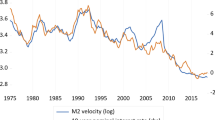Abstract
The consequences of tight monetary policy are analyzed in an optimizing currency-substitution model of a small, open economy that operates under an open capital account and a flexible exchange rate. There is a reasonably good fit between the dynamics generated by the model and the stylized facts in the tight-money episodes that occurred in Kenya in 1993 and Nigeria in 1989-91. The study's results shed light on two issues: why tight money has provoked stupendous increases in inflation and the real interest rate in some episodes, and whether tight money is a foolish, unsustainable policy that always worsens the fiscal deficit and raises the inflation rate in the long run.




